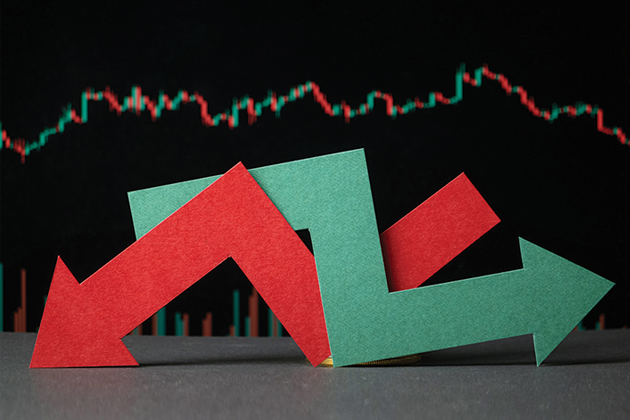
After three years of miserably hard market conditions, risk managers came away from their mid-year and year-end D&O liability policy renewals in 2022 with some positive news: The market had finally stabilized.
From 2019 through 2021, many risk managers experienced massive increases in D&O policy premiums—prices rose 41% in 2020 and 38.5% in 2021, according to S&P Global. The tough market conditions were a response to the low rates charged in the previous 2015 to 2018 period, which insurers ultimately found inadequate to address fast-rising claims frequency and costs.
The sky-high premiums in 2019, 2020 and 2021 added up to a significant amount for D&O insurers. S&P Global reported that direct written D&O premiums at AXA SA, Chubb and AIG, the three leading D&O markets, were up 57.2%, 24.8% and 23.1%, respectively. “All but two of the largest insurers in the United States saw double-digit premium increases,” the ratings agency stated.
Now, the pendulum is swinging the other way. A 2022 report by A.M. Best confirmed the D&O market experienced a turnaround in profitability in 2021. The market’s aggressive premium increases in prior years suggested a “more positive outcome for that market than professional lines as a whole,” said A.M. Best Associate Director David Blades.
The segment’s extraordinary profitability suggested an imminent market recovery for buyers. “After a few years in a row of taking in premium increases, D&O markets made a lot of the money back,” said Thomas Kocaj, QBE North America’s head of management liability. “Premiums decreased significantly at mid-year 2022 and the market remained stable as year-end policy renewals commenced.”
Many insurance brokers have had a similar experience. “Pricing trends completely flipped from where they were,” Woodruff Sawyer reported, stating that 70% of its clients had reported D&O price increases in 2021, compared to 69% reporting price decreases through much of 2022.
A Temporary Reprieve?

The turnaround is nothing new for the D&O market, or for other lines of insurance. But while the softer D&O market at present is a relief for risk managers, at some point, it will turn again. That could happen as soon as the second half of 2023.
According to some industry experts, pricing may be stable now, but there are portents of potential market correctors. “There is still a lot of risk in the system impacting multiple industry sectors,” said Timothy Fletcher, CEO of the U.S. financial services group at Aon. One factor is environmental, social and governance (ESG) risks. “D&O has always been focused on the G in ESG, but less so the E and the S,” he said. “Those factors are now key risks.”
He pointed to last year’s Securities and Exchange Commission (SEC) proposal for publicly traded companies to disclose their own greenhouse gas emissions and those produced across the value chain. “If you don’t invest to improve your metrics on the E and the S, the inaction can result in shareholder problems,” he said. “And if you do invest, you can be criticized by shareholders for being ‘too green’ or ‘too woke.’ Directors and officers are getting it at both ends.”
Fletcher said other D&O market concerns include: high inflation; rising interest rates; continuing supply chain issues; volatile energy conditions in Europe; the cryptocurrency market fiasco ignited by the FTX bankruptcy; a potential surge in layoffs; and the possibility of COVID-related claims against biopharma, diagnostic testing and other health care companies.
“The valuations of some of these companies shot up during the pandemic and have since come down to earth,” he said. “There is also the specter of possible litigation against the directors and officers of companies that promoted high demand for products they developed to treat COVID that were later rejected by the FDA. These are things that, were I a D&O insurer, would give me pause.”
Kocaj also pointed to some potential corrections that may produce adverse outcomes for D&O insurers in the coming months, such as a backlog of securities claims held up by court closures during the pandemic; a possible spike in COVID-related D&O liability claims; more frequent and costly derivative class action lawsuits, in which plaintiffs sue directors and officers for their inaction; and the precipitous decline in new initial public offerings (IPOs) and special purpose acquisition companies (SPACs) in 2022. IPOs hit a 32-year low on the Nasdaq, with SPAC IPOs alone falling from 613 formations in 2021, raising nearly $163 billion, to a meager 83 in 2022, raising around $13 billion.
Enticed by the uptick in IPOs and SPACs in 2020 and 2021, Kocaj said, many new companies entered the D&O insurance market. With far fewer IPOs and SPACs to chase for business in 2022, the newer market entrants were compelled to decrease their D&O premiums for competitive reasons, and other D&O carriers followed.
He is not alone in this observation. “What’s really driving down premiums is increased competition, with dozens of new market entrants in the last couple of years,” said Larry Fine, management liability coverage leader at WTW (Willis Towers Watson). He said the new players are predominantly managing general agencies (MGAs) writing D&O excess layers of insurance at lower attachment levels than seen in prior policy renewals, as well as more established insurance companies increasing their appetite. “My expectation is that current market conditions will continue through the next renewal season,” he added.
Overall, the D&O market “seems to be in a lull, with the possibility of losses increasing through the remainder of the year,” Kocaj said. “If reinsurers are having the same thoughts, we will see some market adjustments.”
Cautious Optimism
Other industry participants and observers expressed cautious optimism that D&O rates will remain stable through the remainder of 2023. “I recently talked with our reinsurance team that went through a whole cycle of treaty renewals, and there is no pullback in capacity,” said Natalie Douglass, chief legal director at Gallagher. “The firming in the hard D&O market of the last few years has stabilized and, after the recent renewals, it is fair to say we have a softening market.”
D&O attorney Dan Bailey, partner at law firm Bailey Cavalieri, had a similar perspective. “I would be surprised if there are sufficient developments that change the direction of the D&O market in 2023,” he said. “While I don’t think we will go back to the soft market we had six or seven years ago, I do think the market will continue to soften.”
Although Bailey agreed that D&O claims emanating from the pandemic are concerning, and potential losses attributable to disclosures made by IPOs and SPACs are a “very real exposure,” he downplayed their impact on market pricing. While courts have reopened and COVID-related claims are making their way through the system, Bailey said he does not foresee a “tidal wave of adverse developments or payouts that carriers had not already anticipated.” He added, “There has also been a significant decrease in the number of SPAC-related lawsuits filed in the last few months, but since SPAC deals are not huge deals, they carry modest limits.”
He noted that many insurers have shied away from SPAC exposures due to perceptions of inherent volatility. “Only the insurers intrigued by the high premiums the policies can dictate were attracted to do the deal,” he said. “It is not a D&O industry-wide phenomenon. I don’t think they are enough of a source of pain to turn the market.”
On the other hand, Bailey is concerned about the impact of derivative litigation, particularly the large settlements reached over the past year, including the $237.5 million settlement in the Boeing derivative lawsuit, $180 million in the First Energy settlement, and $124 million in the Cardinal Health settlement. The size of these settlements is notable as derivative lawsuits are typically settled at much smaller amounts.
He added, “Although the D&O insurance market is more stable today than in the past few years, lots of factors could adversely affect the pricing and terms of coverage in the foreseeable future.” He cited two possibilities that could “dramatically and quickly change” the D&O insurance market: a significant increase in D&O claims frequency or severity, and a catastrophic event impacting the broader insurance market. “Because this is claims-made coverage, the potential for a harder market highlights the constant importance of sound risk management practices,” he said.
Kocaj also emphasized the role of risk management. “My advice to risk managers is not to discount the industry’s cyclicality, much less the cyclical economy,” he said. “I’m hearing that reinsurance treaties are getting a little tighter, looking at things like cryptocurrency exclusions, given what happened to FTX. Ceding commissions also are coming down, which is another early sign of a restriction in terms.” Reinsurers pay ceding commissions to carriers in return for the premiums paid.
“Given these factors, it is probably in the best interest of risk managers to invest in long-term relationships with underwriters that have a track record in this market, with a consistent underwriting strategy and a willingness to ride out market cycles,” Kocaj said.
Risk managers can use this opportunity to be strategic and thoughtful when it comes to their risk transfer choices. For example, Kocaj suggested using the money saved from lower D&O premiums to buy higher limits of D&O insurance or redeploy the savings into lines of insurance like cyber, where premiums are heading upward. However, he acknowledged that the D&O market might not head in the direction he expects.
“I think market stabilization this year is a reasonable expectation,” he said. “At some point, hopefully the Fed is done with interest rate hikes, the economy normalizes, SPACs find their partners to de-SPAC, and the D&O market stabilizes on a longer-term basis. But nothing ever seems to happen in our industry exactly as we think it should.”
